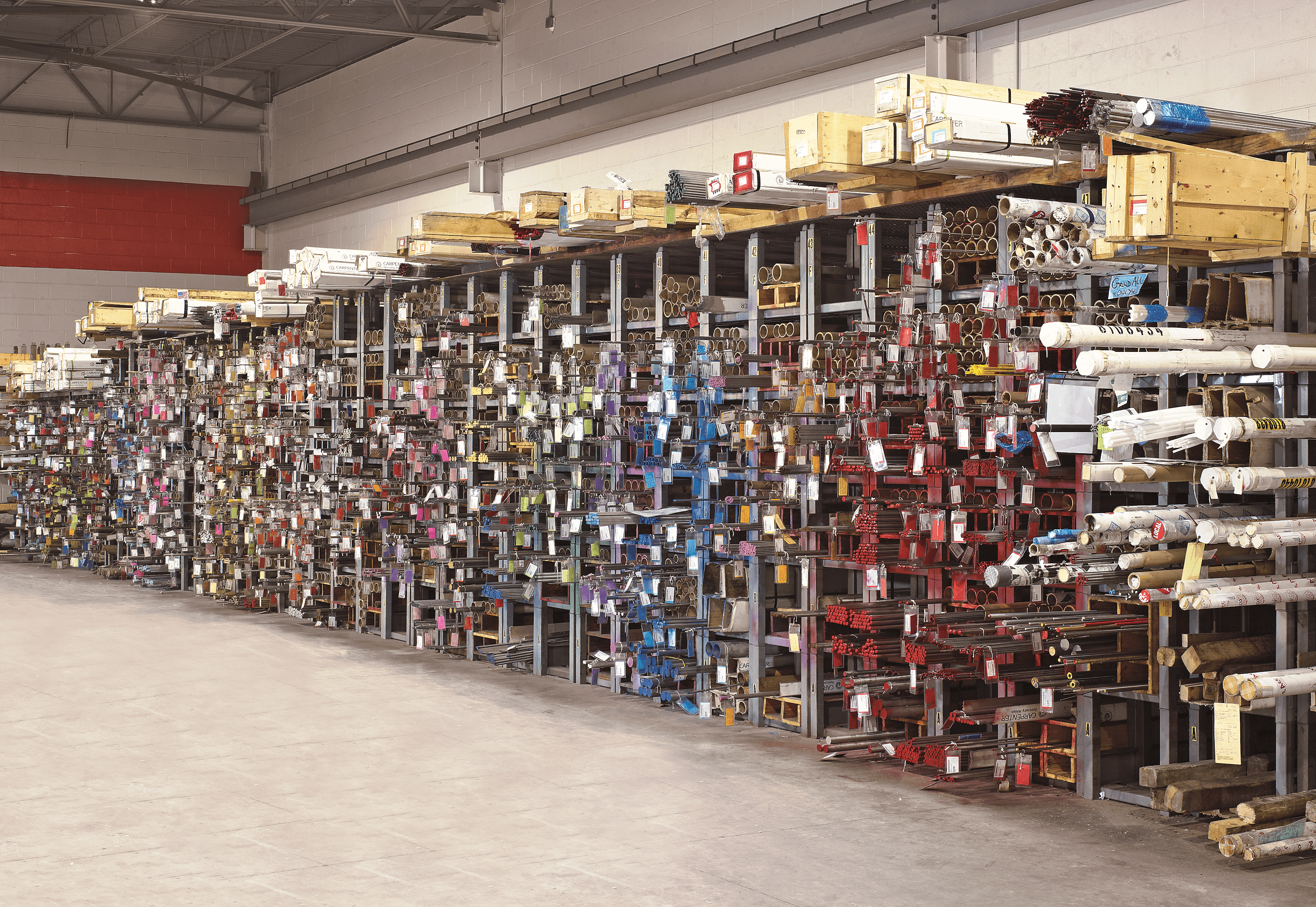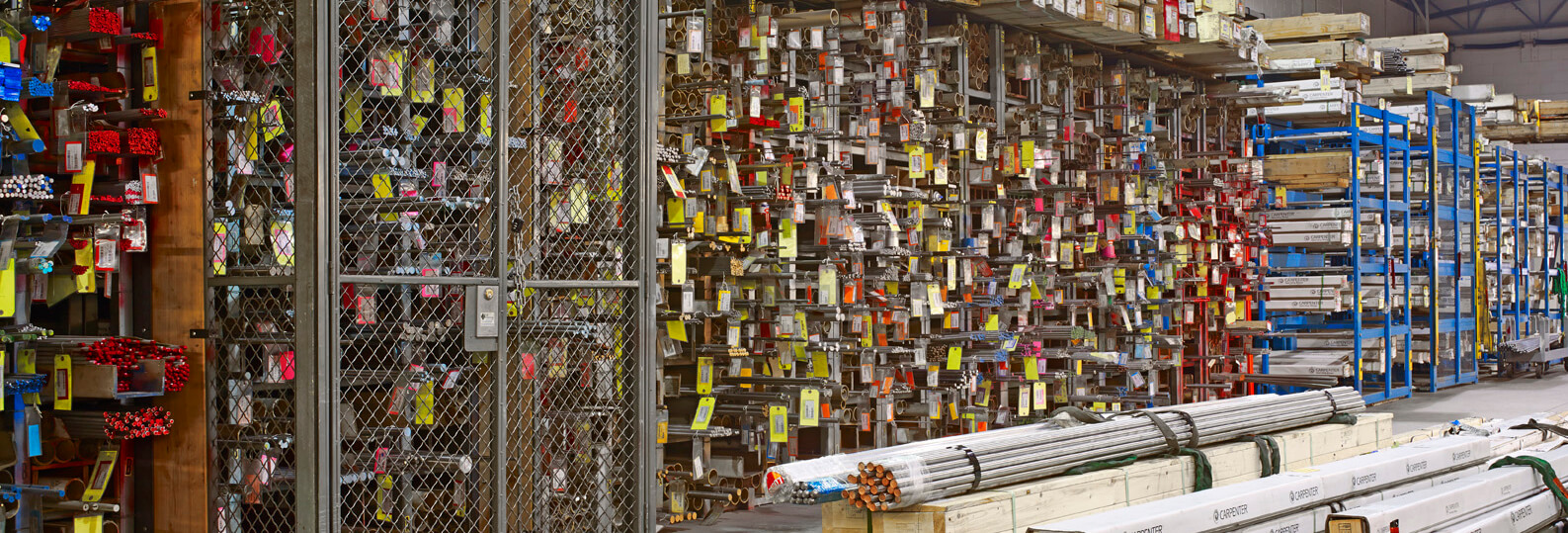
Navigating a Broken Supply Chain: How to Survive the Raw Material Shortage
Today, machining companies must manage their materials purchasing with 12-15 month mill lead-times. Compare that to the 6-month time frame expected just a couple years ago, and it makes you wonder: what’s to blame?
Let’s rewind to the beginning of the COVID-19 pandemic: demand plummeted and in a panic, many of the major mills that produce the high quality stainless steel and specialty metals our industry relies on, used early retirement packages for some of their most skilled employees as a means to cut costs.
Before we knew it, however, demand skyrocketed. These mills, now operating with far fewer employees, were expected to fulfill more orders than they did in “normal” times. Compile that with an overall shortage of skilled workers, the time necessary to train new employees into skilled employees, and the difficulty of acquiring even unskilled labor right now, and there’s no question that constrained capacity is the primary reason for the material shortage plaguing our industry.

Piling on the Pressure
There are, of course, a myriad of other factors contributing to today’s constraint.
Difficulty obtaining pig iron – an essential ingredient in steel production – due to the Russia-Ukraine conflict, remains an issue; Ukraine and Russia happen to be two of the world’s largest suppliers for the natural resource. As a result, many steelmakers must use scrap metal as an alternative to pig iron, which is causing the price of scrap to rise.
Nickel, a main component of stainless steel alloys and lithium ion batteries, is another element that’s abundant in Russia. It’s also traded on the London metal exchange, leaving opportunity for commodity speculative buyers to hedge it and arbitrage the price.
The Importance of High Quality Material
High quality material is necessary for manufacturing precision components, but it also must be produced to precise dimensional tolerances. Without both, the quality and efficiency of part machining suffers. Beginning the machining process with ultra-precise ground bars can even compensate for a lack of skilled labor or mediocre equipment.
At my company, Boston Centerless, we took action to build inventories of high quality material early on, and it has proven to be very helpful. We also are relying heavily on the strong, long-term supplier relationships we’ve developed over the past six decades.

Advice for Dealing with the Material Shortage
Think Long Term
When thinking about your business, always be thinking a few steps ahead. Go to suppliers to find out what their delivery time frame is, then communicate that information to your customers. Do you need to project 12 months out? Let them know to set realistic expectations.
Get More Strategic
At Boston Centerless, our managed inventory programs allow us to flow material requirements to our customers in a way that significantly reduces working capital that is tied up in inventory. We have strategically located distribution centers that can stock specific inventory to suit customer requirements, meaning that materials will be available for rapid transportation to our customers’ facilities.
Address the Labor Shortage
To combat the labor shortage and prevent putting further constraints on our business, we recently hired a full-time, in-house Talent Acquisition Specialist. We’ve raised starting wages, and subsequently moved the entire wage scale upward. We have given merit increases to ensure that all employees are being fairly compensated, and offered bonuses to all direct labor operators that worked through the pandemic. We’re also reviewing our benefits package to ensure we remain competitive with our industry.
Turn to Alternatives
Ask customers to provide the characteristics of the materials they need to see if there may be an alternative material grade that could be substituted that’s more readily available. Thanks to our strong and expansive supplier network, chances are we’ll be able to find alternatives and/or spot-buys from multiple sources.
Leverage Supply Chain Management Services
Companies that offer supply chain management services can provide their customers with just-in-case inventory while saving them overhead by simultaneously offering just-in-time inventory costs. This also helps prevent stressful material shortages.
While we’re currently facing difficult challenges, it’s ultimately a reflection of the manufacturing industry’s critical value to the American economy. While others prepare for recession, our industry has never been busier.
Pressure makes diamonds. The key to emerging from our challenging market more successful than we were going into it is to capitalize on our unique leverage. It all starts with thinking more strategically; what can you do today that you’ll be thankful for in 1, 3, 5, or 10 years? Which work should you prioritize, and which should you turn down? How can you strengthen your supplier relationships to ensure a long-term partnership? The goal may now be to survive the raw material shortage, but when we play our cards right, we can thrive.
—
Steve Tamasi is the CEO of Boston Centerless: a manufacturer and distributor of precision raw materials and preparation services that offers full supply chain logistics management and expertly skilled manufacturers. To learn more about Boston Centerless, including the strategies they’ve implemented to combat the manufacturing labor and material shortages, visit their blog today.

